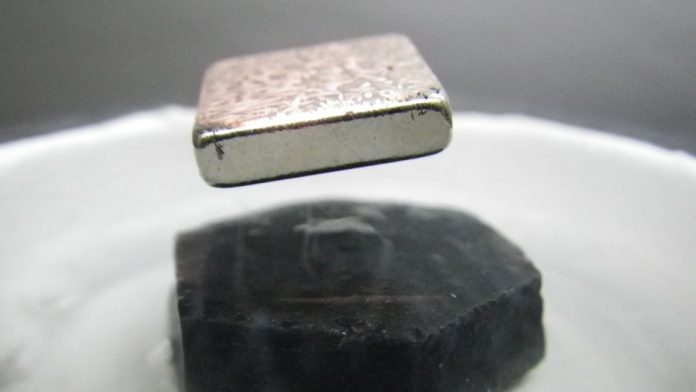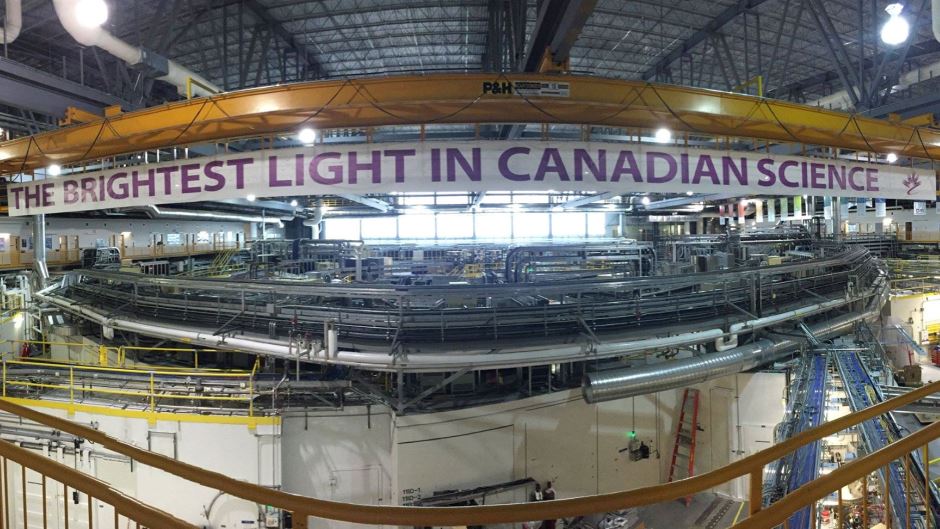A team of researchers led by Prof. David Hawthorn from the University of Waterloo has made new insights into potential mechanisms for high temperature superconductivity.
Superconductors are unique materials that provide no resistance to electron movement. Resistance is what causes inefficiencies in energy conversion, resulting in energy lost as heat. That’s why your computer heats up as it runs and why you can burn your fingers on a lightbulb. Not the case with a superconductor.
Imagine: completely lossless electricity transmission, powerful electronics that aren’t limited by their ability to efficiently dissipate heat, even cost-effective magnetic levitating trains.
The reason we don’t see these technologies yet, is that superconductivity only manifests at very low temperatures, often just a few degrees higher than absolute zero. And even though scientists have made progress finding superconductors that work at higher temperatures (so-called unconventional superconductivity), the highest temperature superconductor currently known still requires a frigid -135°C.
“There is no widespread consensus on the mechanism for unconventional superconductivity,” says recent PhD graduate Andrew Achkar, lead author of the study. That’s why he spent his PhD in Prof. David Hawthorn’s group studying unconventional superconductors and discovering their intricacies. “A complete understanding of these materials may provide a blueprint for higher temperature superconductors.”
His paper, published two weeks ago in the journal Science, explores the arrangement of electrons in copper-based materials that behave as unconventional, high temperature superconductors.
Most unconventional superconductors have a particular symmetrical electron arrangement that breaks down as the temperature decreases, around the same threshold that superconductivity appears. In this study, Achkar and colleagues found that, under certain conditions, a different type of electron arrangement called nematic order appears.
“This type of nematic order has been directly observed with scanning tunnelling microscopy in certain copper-oxide high temperature superconductors, but not in the lanthanum family we studied,” says Achkar. The fact that it is common to copper-based unconventional superconductors provides insight into potential mechanisms. “Nematicity itself may be a knob that can be used to tune the strength of superconductivity.”
Although this study does not elucidate the role that nematicity plays in superconductivity, Achkar notes that “many unconventional superconductors experience instabilities towards various forms of exotic magnetic and electronic correlations, so seeking out additional materials with such tendencies could be a viable approach to discovering even higher temperature superconductors.”
The Canadian Light Source
The main technique used in this study, soft X-ray scattering, was made possible by the Canadian Light Source synchrotron facility in Saskatoon, Saskatchewan. The synchrotron uses radio frequency waves and powerful magnets to accelerate electrons close to the speed of light in a large, donut-shaped vacuum tube. These electrons emit radiation, from infrared to high-energy X-rays, in a very focussed beam that researchers can use to study the microstructure and chemical properties of materials. “The instruments and facility are truly top notch and it [felt] very special to get the opportunity to work there,” said Achkar. “You only get a few days each trip to do your measurements so you have to bring your A-game each time.”
The Canadian Light Source synchrotron facility in Sakatoon, Saskatchewan. Photo courtesy of Xiwen Gong.
“[This study] demonstrates once more the far-reaching capabilities of resonant X-ray methods to peer into the electronic structure and symmetry of materials down to the atomic-scale, with nanometric precision,” says Riccardo Comin, a post-doctoral fellow in Prof. Ted Sargent’s group at the University of Toronto, who was not involved in this work. Comin is a former member of Prof. Andrea Damascelli’s group at UBC that also studies superconductivity.
“These important findings reveal that the electrons tend to break certain symmetries… and thus shed new light on the complex but captivating mechanisms cohabiting and interacting with superconductivity in these materials.”









































